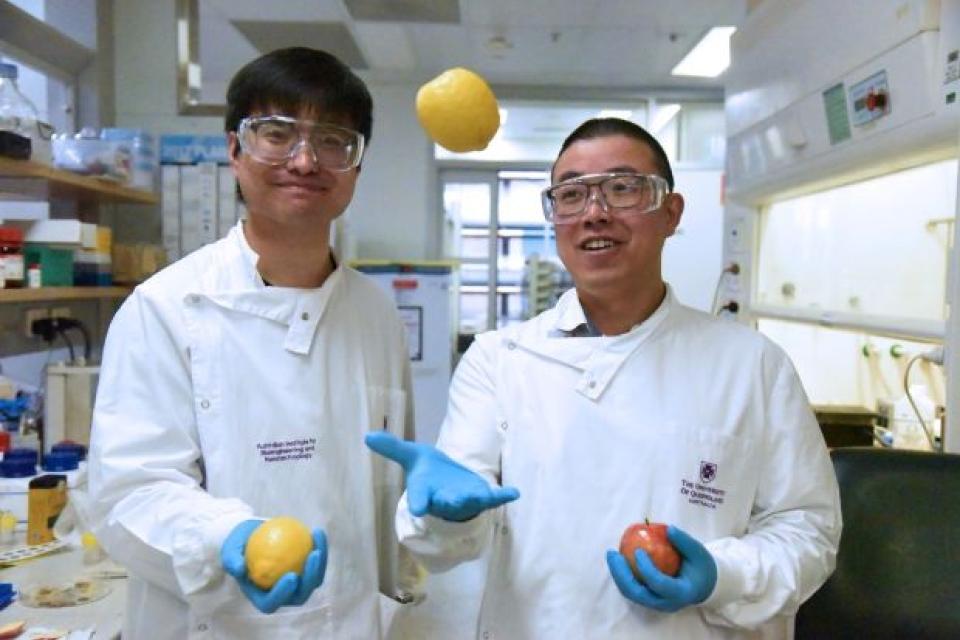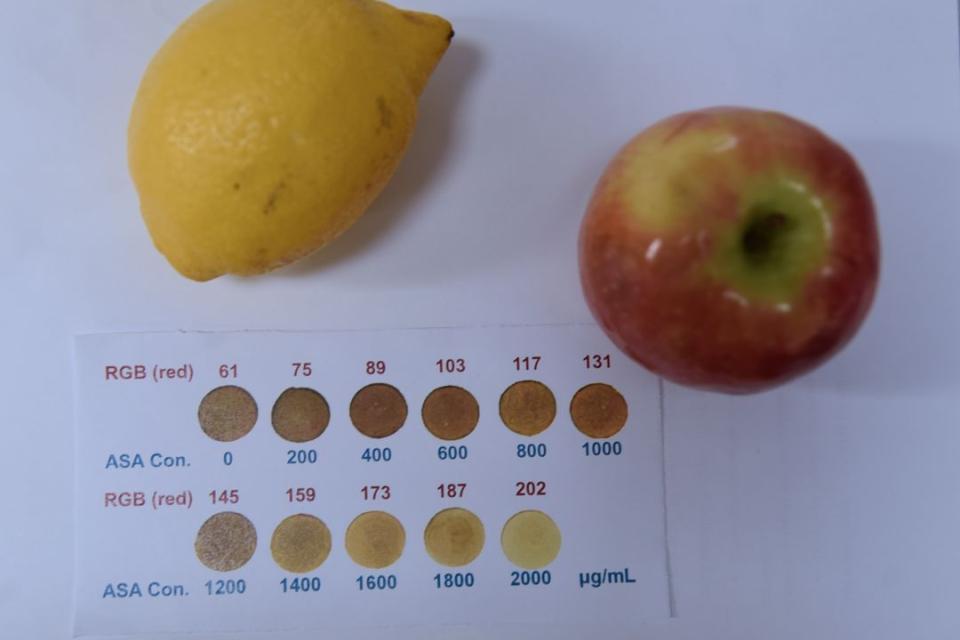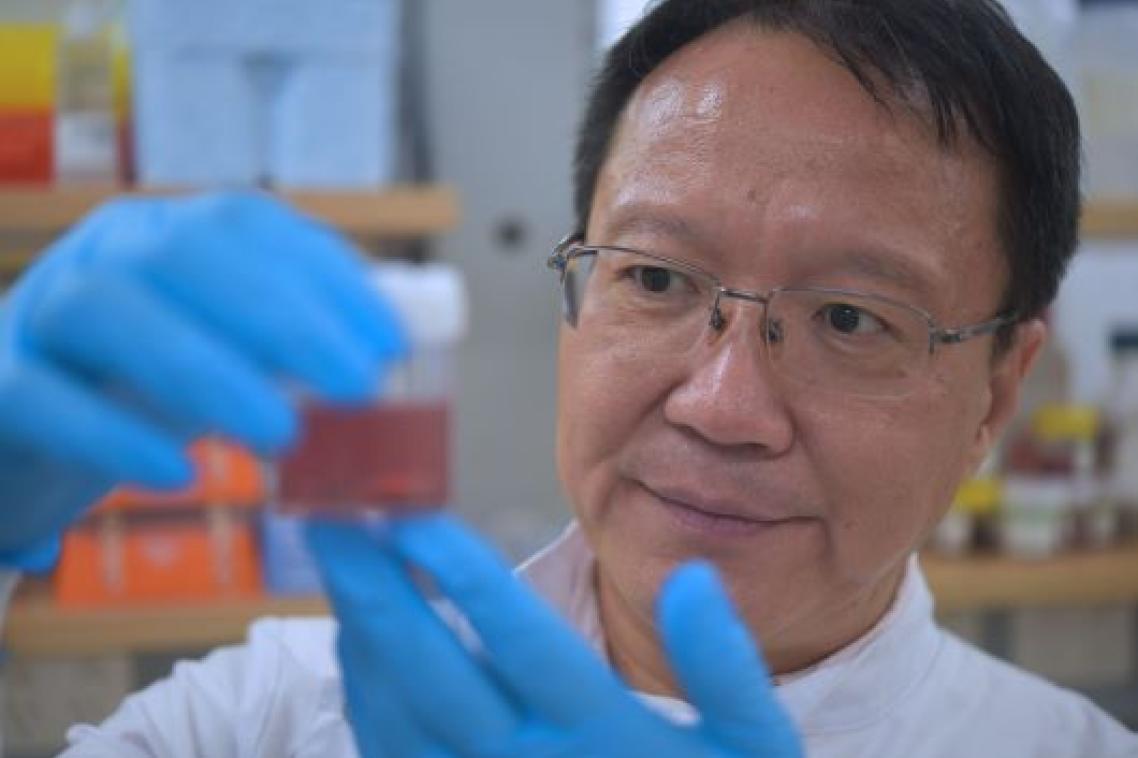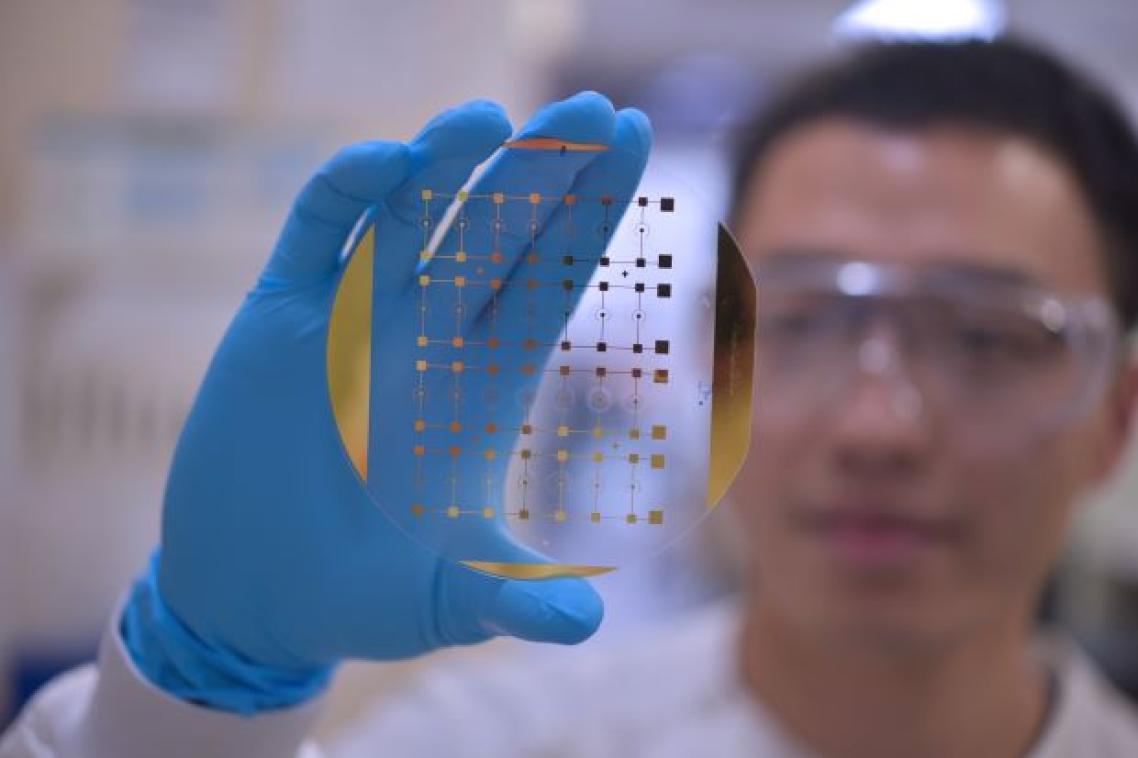Nanotech allows fruit and veg to be scanned for Vitamin C

Vitamin C – also known as ascorbic acid – is a critical antioxidant in most fruits and vegetables.
(Photo credit: Vera Kuttelvaserova/Adobe Stock )
Key points
- Researchers have designed particle-sized probes that change colour to indicate vitamin C concentration in fruit, vegetables, and juices
- The tiny probes can be added to juice samples or applied to paper testing strips that change when touched to whole or cut produce
- Researchers say the colour changes can be viewed with the naked eye but could one day be analysed with a colour visualisation app for a more accurate nutrition reading
University of Queensland researchers have developed a nanoprobe that changes colour to indicate how much vitamin C is in fresh produce and juice.

AIBN researchers Dihua Tian and Dr Run Zhang have developed nanotechnology that gives a quick measure of vitamin C concentration in fruit and vegetables.
(Photo credit: The University of Queensland)
Dr Run Zhang from UQ’s Australian Institute for Bioengineering and Nanotechnology (AIBN) said the technology could be added directly to food and juice samples or applied to paper testing strips that, when touched to cut or intact produce, changed colour to indicate the concentration of vitamin C.
Vitamin C – also known as ascorbic acid – is a critical antioxidant in most fruits and vegetables and can vary significantly depending on the length of journey from the farm to fridge.
“Things like exposure to heat, oxygen, and light all accelerate vitamin C degradation, as does the quality of the soil or pesticide use during the growing process,” Dr Zhang said.
“Measuring vitamin C is therefore an essential step for producers, regulatory agencies, and consumers who want to simply evaluate food freshness and nutritional content.”
The particle-sized probes designed by Dr Zhang’s team consist of a metallic core coated with a fluorescent dye.
The coating is designed to break away in the presence of ascorbic acid and the remaining materials change colour to match the strength of vitamin C in a sample of food or juice.
PhD scholar Dihua Tian said the probes coloured yellow to brown when exposed to different fruits, vegetables, and juices, providing a rudimentary indication of freshness and nutrition.

The nanoprobes can be applied to paper testing strips and touched to whole or cut fruit.
(Photo credit: The University of Queensland)
The simplicity and portability of the technology means a more accurate reading could be possible using a smartphone app.
“We see great potential for more user-friendly analysis,” Dihua said.
“Ultimately this is technology that could be used in tandem with colour visualiser phone applications that can scan a testing strip coated in our nanoprobes and tell you exactly how fresh and healthy the food is.”
Dr Zhang said the nanoprobes also had potential applications in agriculture.
By testing plant leaves for vitamin C content, he said producers could gain insights into plant nutrition, stress responses, and optimal agricultural practices.
“Ultimately we would be supporting environmental sustainability optimising nutrient management in crops,” Dr Zhang said.
The research is published in Food Chemistry.

Colour changes in the nanoprobes can be viewed with the naked eye but colour visualisation apps could offer a more accurate analysis.
(Photo credit: The University of Queensland)
Collaboration and acknowledgements
The research was completed in collaboration with researchers from UQ’s School of Chemistry and Molecular Biosciences (SCMB) and the Queensland Alliance for Agriculture and Food Innovation (QAAFI).Related articles

Nanotechnology could improve odds in treating aggressive breast cancers

Detecting lung cancer with nanotech
Media contact
UQ Communications
communications@uq.edu.au
+61 429 056 139
